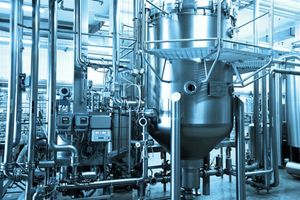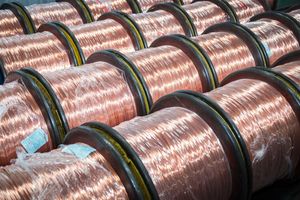
In a monumental strategic shift poised to redefine global technology supply chains, Taiwan Semiconductor Manufacturing Company (TSMC) (NYSE: TSM) is forging ahead with its ambitious "gigafab" cluster in Arizona. With an investment now soaring to an astonishing $165 billion, this endeavor represents the largest foreign direct investment in a greenfield project in US history. This initiative is not merely about building factories; it's a critical move to bolster US manufacturing capabilities, secure a domestic supply of advanced semiconductors, and fundamentally reshape the resilience of the global tech ecosystem, especially given the accelerating demands of artificial intelligence.
The project, initially announced in 2020, has rapidly expanded from a single fab to a planned three, with potential for up to six, alongside advanced packaging facilities and an R&D center. Backed by significant support from the US government's CHIPS and Science Act, including up to $6.6 billion in direct funding and $5 billion in loans, TSMC's Arizona fabs are designed to bring cutting-edge chip production back to American soil. This move is seen as vital for national security, economic stability, and maintaining the US's competitive edge in critical technologies like AI, high-performance computing, and advanced communications.
A New Era of Advanced Manufacturing on American Soil
The technical specifications and timelines for TSMC's Arizona facilities underscore the project's profound impact. The first fab, dedicated to 4-nanometer (N4) process technology, commenced high-volume production in the fourth quarter of 2024 and is expected to be fully operational by the first half of 2025. Notably, reports indicate that the yield rates from this facility are already comparable to, and in some instances, even surpassing those achieved in TSMC's established Taiwanese fabs. This demonstrates a rapid maturation of the Arizona operations, a crucial factor for a technology as complex as advanced semiconductor manufacturing.
Construction on the second fab, which will produce 3-nanometer (N3) chips, was completed in 2025, with volume production targeted for 2028. There are whispers within the industry that strong customer demand could potentially accelerate this timeline. Looking further ahead, groundwork for the third fab began in April 2025, with plans to produce even more advanced 2-nanometer (N2) and A16 (1.6nm) process technologies. Production from this facility is targeted by the end of the decade, potentially as early as 2027. This aggressive roadmap signifies a profound shift, as TSMC is bringing its most advanced manufacturing capabilities to the US for the first time, a departure from its historical practice of reserving bleeding-edge nodes for Taiwan.
This strategic pivot differs significantly from previous US semiconductor manufacturing efforts, which often focused on older, less advanced nodes. By onshoring 4nm, 3nm, and eventually 2nm/A16 technology, the US is gaining domestic access to the chips essential for the next generation of AI accelerators, quantum computing components, and other high-performance applications. Initial reactions from the AI research community and industry experts have been a mix of excitement over the strategic implications and pragmatic concerns regarding the challenges of execution, particularly around costs and workforce integration.
Competitive Dynamics and AI Innovation
The implications of TSMC's Arizona fabs for AI companies, tech giants, and startups are substantial. Companies like NVIDIA (NASDAQ: NVDA), AMD (NASDAQ: AMD), Apple (NASDAQ: AAPL), and Qualcomm (NASDAQ: QCOM), all major customers of TSMC, stand to benefit from a more geographically diversified and secure supply chain for their most critical components. A domestic supply of advanced chips reduces geopolitical risks and logistics complexities, potentially leading to greater stability in product development and delivery for these tech behemoths that drive much of the AI innovation today.
This development holds significant competitive implications for major AI labs and tech companies globally. By securing a domestic source of advanced silicon, the US aims to strengthen its competitive edge in AI innovation. The availability of cutting-edge hardware is the bedrock upon which sophisticated AI models, from large language models to advanced robotics, are built. While the initial costs of chips produced in Arizona might be higher than those from Taiwan—with some estimates suggesting a 5% to 30% premium—the long-term benefits of supply chain resilience and national security are deemed to outweigh these immediate financial considerations. This could lead to a strategic repositioning for US-based companies, offering a more stable foundation for their AI initiatives.
For startups in the AI hardware space or those developing novel AI architectures, the presence of advanced foundries in the US could foster a more robust domestic ecosystem for innovation. It could reduce lead times for prototyping and production, potentially accelerating the pace of development. However, the higher production costs could also pose challenges for smaller entities without the purchasing power of tech giants. The market positioning of the US in the global semiconductor landscape will undoubtedly be elevated, providing a crucial counterbalance to the concentration of advanced manufacturing in East Asia.
A Wider Lens: Geopolitics, Economy, and the Future of AI
TSMC's Arizona investment fits squarely into the broader AI landscape and current geopolitical trends, particularly the global push for technological sovereignty. This initiative is a cornerstone of the US strategy to re-shore critical manufacturing and reduce dependence on foreign supply chains, a lesson painfully learned during the COVID-19 pandemic and exacerbated by ongoing geopolitical tensions. By bringing advanced chip manufacturing to the US, the project directly addresses concerns about the vulnerability of the global semiconductor supply chain, which is heavily concentrated in Taiwan.
The impacts extend beyond mere chip production. The project is expected to spur the development of a robust US semiconductor ecosystem, attracting ancillary industries, suppliers, and a skilled workforce. This creates an "independent semiconductor cluster" that could serve as a model for future high-tech manufacturing initiatives. However, potential concerns loom, primarily around the significant cost differential of manufacturing in the US compared to Taiwan. TSMC founder Morris Chang famously warned that chip costs in Arizona could be 50% higher, a factor that could influence the global pricing and competitiveness of advanced semiconductors. The clash between TSMC's demanding Taiwanese work culture and American labor norms has also presented challenges, leading to initial delays and workforce integration issues.
Comparing this to previous AI milestones, the Arizona fab represents a foundational shift. While AI breakthroughs often focus on algorithms and software, this project addresses the critical hardware infrastructure that underpins all AI advancements. It's a strategic move akin to building the railroads for the industrial revolution or laying the internet backbone for the digital age – creating the physical infrastructure essential for the next wave of technological progress. It signifies a long-term commitment to securing the fundamental building blocks of future AI innovation.
The Road Ahead: Challenges and Opportunities
Looking ahead, the near-term focus will be on the successful ramp-up of the first 4nm fab in Arizona, which is expected to be fully operational in the first half of 2025. The construction progress and eventual volume production of the second 3nm fab by 2028, and the third 2nm/A16 fab by the end of the decade, will be closely watched indicators of the project's long-term viability and success. These facilities are anticipated to contribute approximately 30% of TSMC's most advanced chip production, a significant diversification of its manufacturing footprint.
Potential applications and use cases on the horizon are vast. A secure domestic supply of advanced chips will accelerate the development of next-generation AI accelerators, enabling more powerful and efficient AI models for everything from autonomous systems and advanced robotics to personalized medicine and scientific discovery. It will also bolster US capabilities in defense technology, ensuring access to cutting-edge components for national security applications. However, significant challenges remain. Sustaining a highly skilled workforce, managing the inherently higher operating costs in the US, and navigating complex regulatory environments will require ongoing effort and collaboration between TSMC, the US government, and local educational institutions.
Experts predict that while the Arizona fabs will establish the US as a major hub for advanced chip manufacturing, Taiwan will likely retain its position as the primary hub for the absolute bleeding edge of semiconductor technology, particularly for experimental nodes and rapid iteration. This creates a dual-hub strategy for TSMC, balancing resilience with continued innovation. The success of the Arizona project could also pave the way for further investments by other major semiconductor players, solidifying a revitalized US manufacturing base.
A New Chapter for Global Tech Resilience
In summary, TSMC's Arizona fab cluster is a pivotal development with far-reaching implications for global semiconductor supply chains and US manufacturing capabilities. It represents an unprecedented investment in advanced technology on American soil, aimed at enhancing supply chain resilience, boosting domestic production of cutting-edge chips, and fostering a robust US semiconductor ecosystem. The project’s strategic importance for national security and economic stability, particularly in the context of accelerating AI development, cannot be overstated.
This initiative marks a significant turning point in AI history, securing the foundational hardware necessary for the next generation of artificial intelligence. While challenges related to costs, labor, and geopolitical dynamics persist, the long-term impact is expected to be a more geographically diverse and resilient semiconductor industry, with the US playing a significantly enhanced role in advanced chip manufacturing. What to watch for in the coming weeks and months includes further progress on the construction and ramp-up of the second and third fabs, TSMC's ability to manage operating costs, and any further policy developments from the US government regarding the CHIPS Act and potential tariffs. The success of this ambitious undertaking will undoubtedly shape the future of technology and geopolitics for decades to come.
This content is intended for informational purposes only and represents analysis of current AI developments.
TokenRing AI delivers enterprise-grade solutions for multi-agent AI workflow orchestration, AI-powered development tools, and seamless remote collaboration platforms.
For more information, visit https://www.tokenring.ai/.







